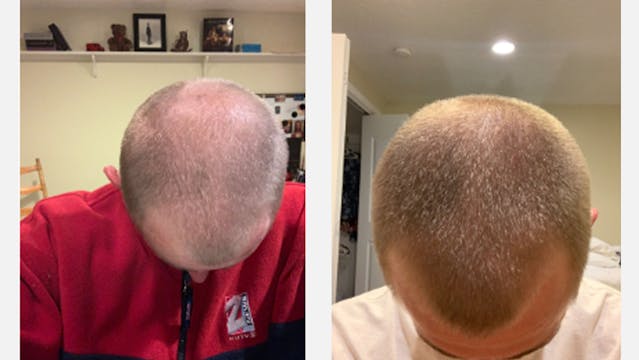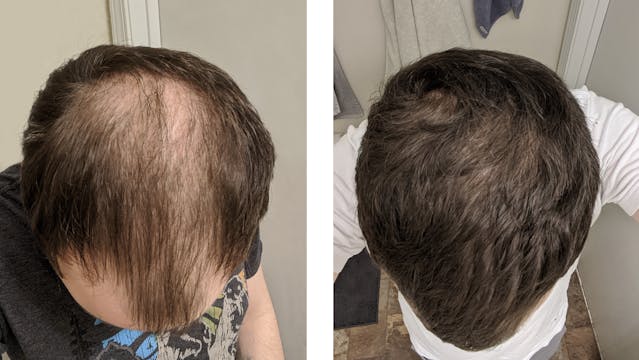Have you ever stopped to think about how your hair grows?
Usually this doesn’t cross our mind until something appears out of the ordinary.
The normal process of hair growth is influenced by androgens, a group of hormones mainly involved in sexual maturation, but are also present in women.
First, there is an active phase of hair production by specialised cells on the scalp which lasts up to 6 years (anagen phase). This is followed by a quiet, dormant phase (telogen phase). During normal hair growth, the cycle is completed when active cells replace the dormant cells and begin to produce hair again. This process happens seamlessly without you noticing.
It’s normal to lose about 100 hairs each day. Men usually don’t notice this because these hairs are replaced by new hairs. Hair loss, in general, can either be temporary or permanent and can occur in patches or as complete baldness. The rate of hair loss can vary substantially, depending on various factors but particularly the underlying cause.
Causes of temporary hair loss
Temporary hair loss can be caused by a range of medical problems, including low levels of nutrients such as iron. Common foods that contain high levels of iron include red meat, green leafy vegetables and pulses. Hair loss can also be caused by stress, illness, cancer treatments and weight loss. Temporary hair loss caused by these problems usually resolves without specific hair-related treatments after the illness or triggering factor resolves.
Causes of permanent hair loss
Androgenetic alopecia, also known as male pattern balding, is the most common type of permanent hair loss in men and women. Andro comes from the Greek word anēr, meaning man and refers to the androgens, including dihydrotestosterone. Despite normal hormone levels, some people’s hair follicles are more sensitive to the activity of the androgenic hormones. In these men, hair follicles, the hair-producing cells on the scalp are affected. The hair follicles shrink, produce lighter and thinner hair and eventually stop producing hair altogether.
This type of hair loss is also thought to have a genetic component, which, contrary to some old wives’ tales, can be inherited from either parent. Different populations are affected by male pattern balding at different rates; Caucasian men are more likely to be affected, whereas Chinese and Japanese men are affected less commonly by hair loss. Future areas of scientific research may include exploring further if male pattern balding is associated with smoking or other illnesses.
The numan take
Upholding a healthy, balanced lifestyle is always good idea for helping men to feel confident and able to achieve their goals. It is important to remember that male pattern balding does not imply that a man is unhealthy and we hope that men can feel empowered, however they choose to address their hair loss.
If you are interested in treatments proven to reduce hair loss in cases of male-pattern baldness, you can find out more here.






